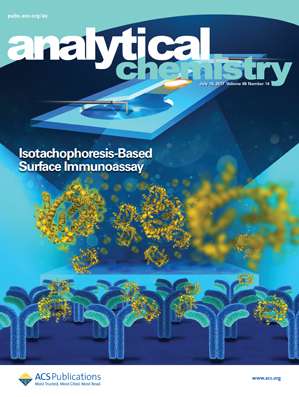New microfluidic chip boosts the sensitivity of immunoassays by >1000x

Proteins are one of the most important classes of biomarkers – biological molecules indicative of a disease or health of an individual. The detection of proteins is critical in a variety of tests; from the diagnosis of malaria, through the detection of heart attacks, to cancer screening and monitoring. The most common way to detect these biomarkers is to use a biochemical test known as an immunoassay, which is the basis of any pregnancy test.
As with any test, improving accuracy, means more precise results and now appearing on the cover of the peer-reviewed journal Analytical Chemistry scientists have made a significant improvement.
The achievement comes from an international team of scientists from Technion – Israel Institute of Technology and IBM Research in Zurich who have jointly developed a technique which can improve the sensitivity of protein detection in immunoassays by more than 1,000-fold, when compared to a standard immunoassay implementation. The team's method is based on a simple piece of hardware – a microfluidic chip containing flow channels the width of a human hair.
What makes this technique particularly important is that it works incredibly well when protein biomarkers are present in extremely small numbers, as is the situation during the early stages of a disease.
Moran Bercovici, assistant professor at the faculty of Mechanical Engineering at Technion said, "We use an old focusing technique called isotachophoresis (ITP) in a new way – using a combination of electric fields and specialized chemistry. This enables us to collect proteins into a tiny volume and precisely deliver them to react with detection antibodies patterned on the surface of the microchannel".
"We essentially fool the detector," adds Federico Paratore, a joint PhD student between the groups, and the lead author on the work. "We present to a standard detector a protein concentration that is 10,000-fold higher than in the original sample, and get the detector to respond accordingly."
Paratore explains the simplicity of the test, "A few drops of the sample are introduced into the microfluidic chip, and an electric field is turned on. Remarkably the proteins are compressed to a volume of approximately 50 pico-liters – about 1 million times smaller than the volume of a human tear drop and in just a few minutes, the result is visible."
Paratore is part of a joint European Union project, Virtual Vials, and works across both sites combining the strengths of Technion's team in electrokinetics and fluid mechanics, with IBM's expertise in microtechnology and diagnostics. At Technion, Paratore collaborated with Tal Zeidman‑Kalman and Tally Rosenfeld, who are co-authors of this paper.
Dr. Govind Kaigala, scientist at IBM Research adds, "The elegance of this approach is in its simplicity and of course the immense enhancement in assay sensitivity that could be applied to a range of immunoassay. We strongly believe such a technology will help to fill the gaps in existing immunoassay technology and be applied directly to biological samples such as blood, saliva, or urine."
The team's approach may enable simple devices capable of analyzing small samples (such as a drop of blood), replacing the large and sophisticated laboratory equipment required today.
More information: Federico Paratore et al. Isotachophoresis-Based Surface Immunoassay, Analytical Chemistry (2017). DOI: 10.1021/acs.analchem.7b00725
Journal information: Analytical Chemistry
Provided by IBM



















